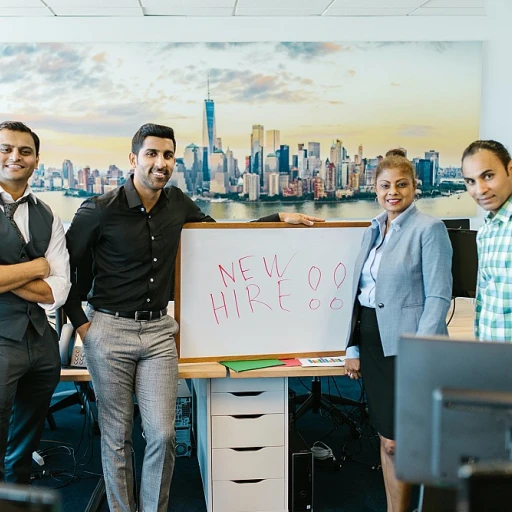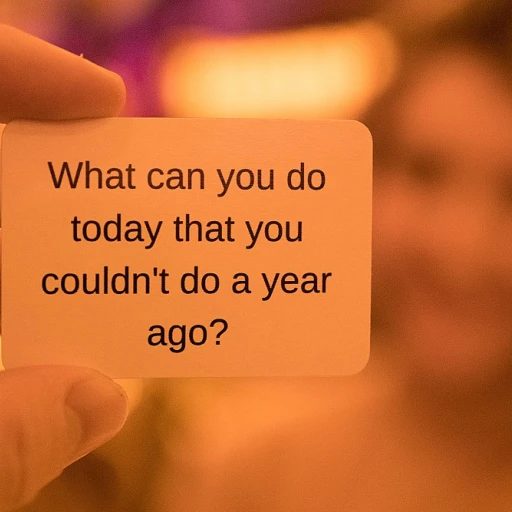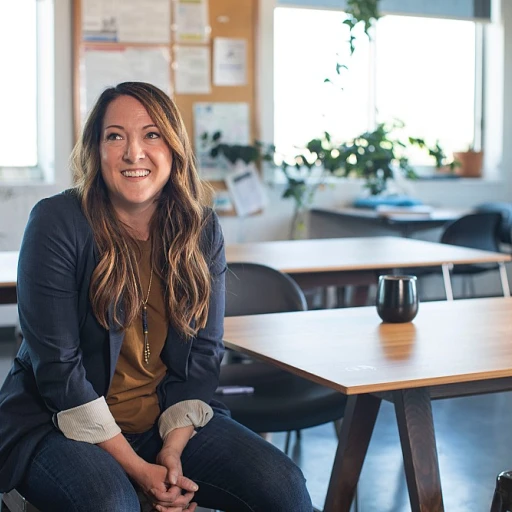
Understanding the Importance of Lifelong Learning
Lifelong learning is not just a trendy concept; it's a vital part of personal and professional growth. It empowers us to continuously acquire and apply knowledge and skills throughout our lives, adapting to an ever-evolving world. Harnessing the potential of lifelong learning is crucial, especially when it comes to appearing innovative and maintaining a competitive edge in various sectors.
The Role of Lifelong Learning in Today's World
In a world where innovation and technology are rapidly advancing, the capacity to learn and adapt becomes the cornerstone of success. For creative thinking and problem solving, it encourages a growth mindset and promotes the development of new ideas, thus fostering a climate ripe for creative problem solving and innovation.
Industries today require people who are equipped with a diverse set of skills and an ability to think outside the box. The process of acquiring new skills can significantly impact business operations, design, and the provision of products services that meet the changing demands of the environment.
The Benefits of Continuous Learning
The pursuit of learning offers numerous advantages, from personal enrichment to professional development. It can also improve mental health by keeping the mind active and engaged. Creative process enhancements follow as individuals better understand ideas, solutions, and strategies for problem solving.
The ideas solutions generated from ongoing learning can contribute to both personal satisfaction and organizational success. Such benefits make it clear why both individuals and businesses invest in creativity innovation and the continuous betterment of knowledge.
Why Organizations Foster a Learning Culture
Organizations that promote a culture of lifelong learning experience higher rates of employee satisfaction and retention. This environment of thinking and innovation encourages employees to generate ideas and actively engage in problem solving using data-driven insights.
By investing in the workforce's ability to learn, businesses reap the rewards of divergent thinking that lead to innovative solutions and startup ideas. For a deeper understanding of corporate commitment to education, consider checking out this discussion on corporate education's future.
Identifying Your Learning Style
Recognize Your Unique Learning Approach
Understanding your personal learning style can be a transformative step in your lifelong education journey. Although people often focus on the content or knowledge they wish to acquire, how you absorb and process information is equally crucial. Recognizing your natural learning tendencies can enhance your ability to generate innovative ideas and problem-solving skills. The process of identifying your learning style begins with observation. Are you someone who grasps concepts better through visuals, or do you thrive in an environment where ideas are debated and discussed? Trying different methods can also help in pinpointing what suits you best. Embrace divergent thinking, which allows for multiple solutions to emerge, often leading to creative problem solving and innovative startup ideas. For some, practical application through hands-on design thinking activities can be more effective. Business and design professionals often benefit from seeing data and processes in action. This is where technology can play an essential role, offering various formats and approaches tailored to individual preferences. Don't forget the power of social connections. Sometimes, engaging with others on social media or in formal learning settings can shed light on new ways to optimize your creative thinking. Conversations offer a platform where ideas flow more freely, contributing to a robust creative process. In the realm of lifelong learning, there's no one-size-fits-all solution. Recognizing what works best for you can help in shaping innovative solutions and generating ideas that are both impactful and meaningful. Continuous assessment of your learning techniques and adapting them to different contexts will ensure you stay creative and informed in today's ever-evolving landscape. For additional guidance on leveraging online tools to support your learning style, consider exploring the benefits of online learning for lifelong education. This resource highlights practical strategies to integrate technology effectively into your educational goals.Leveraging Technology for Learning
Embracing Technology to Enhance Learning
In today's fast-paced world, leveraging technology for learning is not just an option; it's a necessity. With the rapid evolution of digital tools, people have more opportunities than ever to engage in creative problem solving and innovative thinking. Whether you're looking to generate ideas for a startup or simply enhance your creative process, technology offers a plethora of resources to help you on your journey.
One of the best ways to incorporate technology into your learning process is by using apps designed for creative thinking and problem solving. These tools can help you break out of the traditional thinking box and explore new avenues of creativity. For instance, apps that focus on lateral thinking can stimulate divergent thinking, allowing you to find innovative solutions to complex problems.
Social media platforms also play a crucial role in continuous learning. They provide a space for users to share innovative ideas and collaborate on projects. By engaging with communities that focus on creativity and innovation, you can gain insights into the latest trends and startup ideas. This collaborative environment fosters a culture of creativity innovation, where ideas solutions are constantly being exchanged and refined.
Moreover, the use of data analytics in learning can significantly enhance your ability to design personalized learning experiences. By analyzing your learning patterns, you can identify the most effective strategies for your unique style. This step guide approach ensures that you are not just consuming information but actively engaging with it in a way that promotes long-term retention and understanding.
It's important to recognize that while technology offers numerous benefits, it also requires a mindful approach. Continuous partial attention, a phenomenon where individuals are constantly dividing their focus among multiple tasks, can hinder the learning process. To combat this, it's essential to set aside dedicated time for focused learning sessions, free from distractions. For more insights on this topic, you can explore the concept of continuous partial attention and its impact on learning.
In conclusion, by embracing technology and integrating it into your learning strategy, you can unlock new levels of creativity and innovation. Whether you're a business professional seeking to enhance your products services or an individual looking to improve your mental health through learning, technology provides the tools you need to succeed.
Creating a Personalized Learning Plan
Develop a Tailored Strategy for Effective Learning
Creating a personalized learning plan is a transformative step in your lifelong learning journey. Understanding your motivations, interests, and goals can help stimulate innovative solutions that ensure fruitful learning experiences. Here’s a step guide to design a plan tailored just for you:- Define Your Goals: Identify what you want to achieve with your learning activities. It could be acquiring new business skills, enhancing creative thinking, or mastering innovative solutions. Clearly defined goals provide direction and purpose.
- Assess Your Available Resources: Evaluate the time, financial means, and tools at your disposal. Apps, online courses, books, and social media are some resources that can support the learning process, allowing you to solve emerging problems creatively.
- Set a Realistic Schedule: Consistency is key. Allocate time slots to fit learning activities into your daily routine without compromising other responsibilities. Eventual time constraints can be tackled with thoughtful planning.
- Choose Your Methods: With your identified learning style in mind, select methods that keep you engaged. These could include online courses for data analysis, design thinking workshops, or podcasts on innovative startup ideas.
- Incorporate Feedback Loops: Regularly assess your progress and approach. This helps refine your strategy and may provide new insights or innovative ideas for further skill development.
Overcoming Common Learning Barriers
Common Learning Obstacles and How to Triumph Over Them
Embracing a lifelong learning journey is undeniably rewarding, yet many people face various obstacles along the way. Addressing these barriers requires a blend of creative problem-solving, lateral thinking, and innovative solutions. Here’s a step guide to help navigate these challenges effectively.- Time Constraints: Balancing learning with daily responsibilities is a common issue. Prioritize your learning activities by designating specific blocks of time dedicated to this process. Innovative ideas, like using micro-learning apps on your commute, can help optimize your time.
- Lack of Resources: Often, people feel limited by insufficient resources. Leveraging free online content, such as open educational resources or free personalized learning plans, can be a cost-effective solution. Innovating the way you consume information will make a notable difference.
- Motivational Challenges: Maintaining the will to continue learning can be tough. Engage with social media communities to fuel creativity and gain support from like-minded individuals. Surrounding yourself with inspiring content can keep the mental health in check while boosting the motivation.
- Information Overload: Navigating through overwhelming amounts of data can hinder the learning process. Apply divergent thinking to critically assess information relevance. The creative process of filtering data focuses your attention on the most beneficial insights.
- Technology Adaptation Issues: Technological advancements often present a learning curve. Embrace a mindset of continuous adaptation by gradually familiarizing yourself with new tools and apps. This approach helps you find innovative methods to enhance learning experiences.












